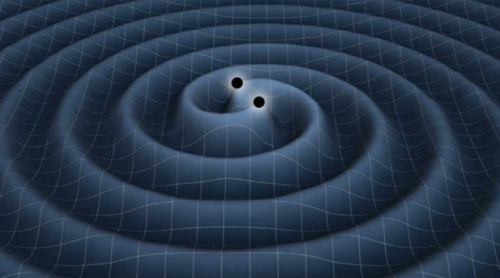Friday, 12 February 2016
Astronomers have finally found evidence of gravitational waves.

After 100 years of theory and decades of experiments, astronomers have detected gravitational waves directly for the first time. The announcement, made Thursday by the Laser Interferometer Gravitational-Wave Observatory (LIGO) and accompanied by a paper in Physical Review Letters, describes a powerful signal that ultimately began with the merger of two black holes located 1.3 billion light-years away.
The finding not only confirms yet another aspect of Albert Einstein’s theory of gravity, known as general relativity, but it also opens another avenue for researchers to observe and study the universe.
“Ladies and gentlemen, we have detected gravitational waves. We did it!,” said LIGO scientific spokesman David Reitze at the announcement Thursday. Before crashing together, the black holes were 36 and 29 times the Sun's mass. Afterward, the new combined black hole has only 62 solar masses, with the colossal difference — 5,000 supernovas' worth of energy — radiated away as gravitational waves.
Gravitational waves are literally distortions in space-time, ripples in the fabric of the universe. Gravity is the weakest of the four fundamental forces, so only the most extreme events — black holes colliding, neutron stars twirling, a supernova erupting — would produce detectable waves. LIGO’s twin detectors, in Louisiana and Washington state, use lasers to watch for these tiny stretches and squeezes of space-time.
These ripples open a new window on the universe, allowing astronomers to hear in the darkest regions of space where telescopes yield no information. Black holes, for instance, are infamously impossible to observe directly; they emit no light. But with gravitational waves, astronomers can probe the very heart of the singularities. They will discover black holes completely invisible to traditional observatories — and surely new surprises as well.
“Imagine the instrument as a giant ruler,” says Marco Cavaglià, a University of Mississippi astronomer and assistant LIGO spokesman. “We measure distance along two perpendicular arms, and if these distances change, then we can see it with the laser light.” Although the gravitational waves are incredibly weak — only enough to warp the distance between Earth and the Sun by the width of a hydrogen atom — LIGO’s instruments are extremely sensitive.
Detection of gravitational waves, which were initially predicted in 1916, follows months of rumors. Just a week after the newly upgraded LIGO went online, popular (and unaffiliated) physicist Lawrence Krauss tweeted that he heard about a gravitational wave detection. About a month ago, another tweet from Krauss doubled down on the finding, sending rumors into overdrive. All official sources declined to comment until Thursday’s announcement.
It’s not hard to see why: This is one of the biggest scientific discoveries of the decade, if not the century. There’s already talk of Nobel prizes for the discoverers. And with the stakes so high, the science must be accurate, especially given other recent groundbreaking announcements that later turned out not to be true. Assuming these findings hold up, it’s an exciting time in astronomy. Gravitational waves can now serve as another way to scour the cosmos, akin to being able to see a new color. It’s impossible to say what discoveries await in the coming gravitational wave era, but every time astronomers have found a new way to observe, breakthroughs have soon followed.
In 1865, James Clerk Maxwell predicted that light travels in waves, but humanity needed Heinrich Hertz’s first radio transmitter to unleash modern technology and unveil new types of cosmic phenomena.
In terms of historical significance and future potential, detecting gravitational waves had been one of the most anticipated discoveries in modern science.
“It is, of course, the great hope of all the astrophysicists involved here that this new window will allow us to see things that one has not even thought of before,” says Albert Einstein Institute senior scientist Albrecht Rüdiger, who spent his entire career developing detectors.
Subscribe to:
Post Comments
(
Atom
)



No comments :
Post a Comment